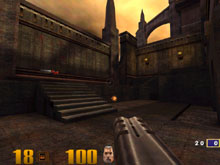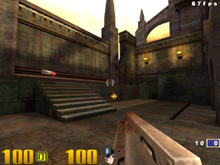Several weeks ago, The Firing Squad posted an article that attempted to compare full-scene anti-aliasing (FSAA) on the Voodoo5 5500 and the GeForce2 GTS. This article included a so-called “blind-test†where people had to decide which card's FSAA image quality was better, but without knowing which 3D chipset created the image. The blind test concluded that NVIDIA’s GeForce2 board produced better image quality when using FSAA. This conclusion, of course, came as a big blow to 3dfx, who have been promoting their FSAA quality ever since it was announced late last year. The Firing Squad article was removed shortly after its publication when it was realized that the testing methodology was flawed.
What happened in the Firing Squad tests? Why was it flawed? Why did the Voodoo5 5500 FSAA image quality fare poorly in the visual testing? Why have others seen image problems in screenshots but not in live screen tests? In this article I’ll explain exactly why Firing Squad came to their conclusion and I’ll also explain why this conclusion is not valid. I’ll also look into various other settings, like Mip Map Dithering and Mip Level Bias settings, that can influence the image quality of the V5500.
What went wrong during the blind test?
Firing Squad didn’t have two equal machines available to do a side by side comparison, so they went for what they thought was the best alternative: screenshots viewed using the same monitor. Now the whole problem with this methodology lies in the fact that “screenshots†were used. Screenshots and Image Quality are very sensitive to a huge variety of settings; a well-known setting is gamma, or more specifically, brightness and contrast. Different gamma/brightness/contrast settings create very different looking images, more or less colorful, more or less contrast, etc. Cutting out the influence of gamma is extremely difficult. In fact, one of the first things that strikes people the most when asked to judge image/visual quality is the level of gamma/brightness/contrast. But gamma is not the main issue that made the GeForce2 images look better. The main problem was located in the way the screenshots were made.
The traditional way to capture a screenshot in Quake III Arena is to press F11. Doing this will save a screenshot in a subdirectory of Quake III Arena. So it’s a built-in screen-capture, no need for external software or tools. Below you can see 2 screenshots, one was taken using a GeForce1 based ASUS V6800 Deluxe and the other was taken using a 3dfx VSA-100 based V5500. Both images were taken in 16bit color at roughly the same position using equal quality settings with the highest quality FSAA mode.
Voodoo5
What you will notice is that the V5500 shows large uniformly colored zones where the GeForce based board delivers smooth and detailed colors. Even more the V5500 doesn’t even show dithering patterns in those zones. How is this possible? Things get even weirder in 32bit mode where there seems to be no problem at all:
Voodoo5





